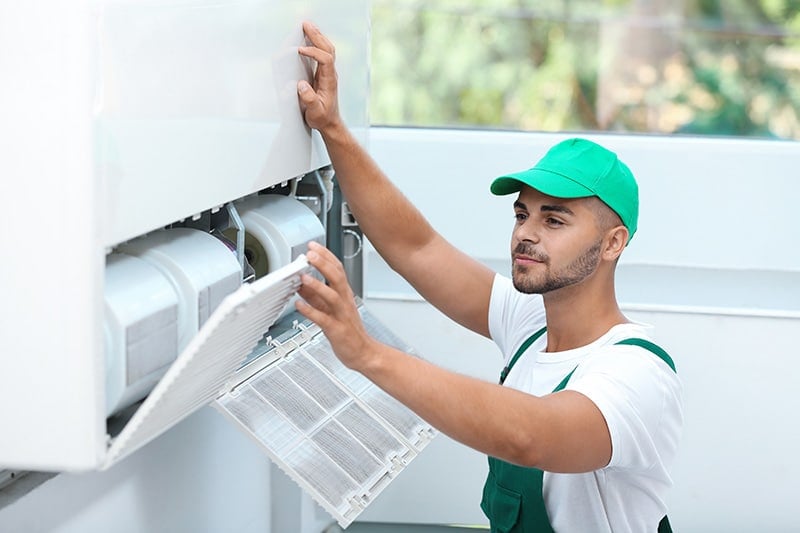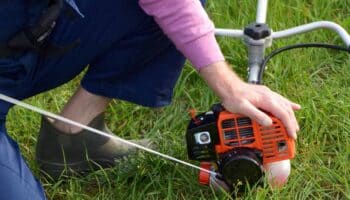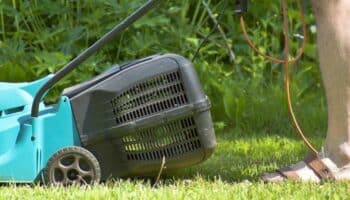It’s a beautiful day. The lawn is dry and lush. You don’t have any other commitments. Time hit that lawn you’ve been avoiding with your always-reliable electric mower.
You get your hat and sunglasses, pull the mower out, and get to mowing.
Only the mower isn’t mowing.
In fact, it doesn’t sound like it’s doing much of anything. What happened to being reliable?
Now with a gas mower, you’d be able to tell if the engine was at least trying to start. It might need gas or more priming but you’d have an idea if the engines were cycling and blades rotating. Sure, it might stall out or never fully engage but you’d still have an idea.
With an electric mower, troubleshooting is a bit different, although some things remain the same.
Below are six things to consider and tips to follow when troubleshooting why your electric lawn mower blades aren’t spinning.
1. Safety First
Yes, it’s an electric mower, and maybe you’ve had it for a while. Know how it feels and reacts. Know all the safety precautions and warnings.
However, remember don’t give in to temptation and start troubleshooting without considering safety items first. Just because you’re sure you know it all, don’t give in. In other words, don’t rely on memory when a quick review is always appropriate.
You might remember something you forgot by reviewing, like don’t put your hands, or worse, your face close to the blades without making sure the mower’s source of power is secured.
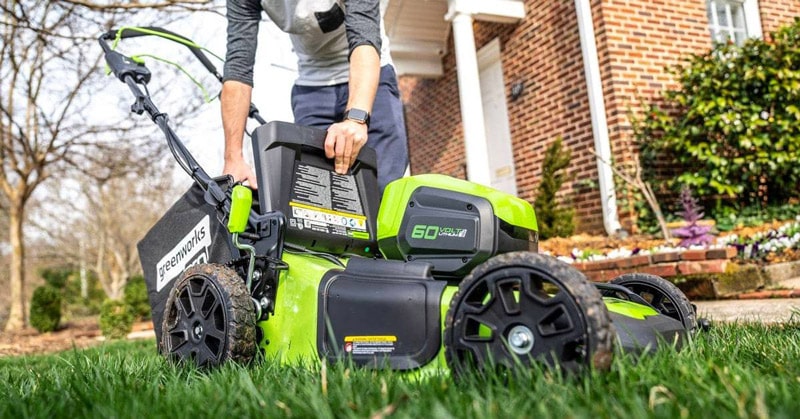
Yes, that’s a bit of an exaggeration but does it hurt to remind yourself of that tip?
Also, you probably want to do your troubleshooting on dry concrete and not on the lawn. Even if it is dry outside, if for some reason you get an unexpected afternoon shower, concrete dries quicker than grass. If you’ve got a garage, even better.
And, if you’ve never thought about this, have you ever noticed it’s easier to see under your mower on concrete than grass? Now, this isn’t a scientific reason listed in the manufacturer’s manual, but it does seem like the light reflecting off concrete makes the underneath of the mower brighter than lush green grass does.
Last but not least, consult or have your manufacturer or owner’s manual with you as stated above. If you don’t have a hard copy, you can probably find it below.
2. What Does That Manufacturer’s Manual Recommend?
Another good reason not to rely on memory is that the manufacturer’s manual that originally came with your mower or you found with the help of Google allows you not to remember everything. Why rack your brain troubleshooting when there’s always a handy list in these manuals that gets you started on the right path?
Heck, you might even get lucky and fix the problem right off the bat.
So, before doing any other Google searches or checking for YouTube videos, check out that manual that was written for your specific model of mower.
3. Always Check You Power Supply
This will often be the first recommendation in any manufacturer’s manual. Do you have power? If you don’t have power, whether it’s a corded mower or battery-operated mower, you will absolutely not get any spinning blades.
So, check to make sure you’re getting power to the mower. If you have a corded mower, test the outlet by plugging something else into it. If the thing you plugged in works, you know it’s not an outlet problem.
If, however, whatever you do plug in doesn’t work, check your breaker. If the breaker looks good, test another outlet with the same device. From there, try a different extension cord.
Side Note: Almost all corded mowers don’t come with their own cord. It’s your responsibility to provide the cord that runs from the outlet to the mower so ensure the cord you’re using is functional. If it isn’t, try another.
You see where all this is going. Exhaust the possibility it may be a simple outlet or breaker or cord problem.
If you have a battery-powered electric mower, make sure the battery indicator on the battery is showing that it’s charged. That doesn’t necessarily mean it is because you can get a false reading. This is where a battery tester comes in handy.
If everything looks good at the power supply, then you need to turn your attention to the load, i.e., the mower.
4. Is the Mower Starting?
Okay, you’ve cleared up any issues with the source. Now let’s take a look if the situation is a power failure at the motor itself.
If you have a corded motor, make sure the connection of the cord at the mower is good and not loose. Also, check the prongs and make sure there aren’t any bent or damaged pieces.
If everything looks good there, check the circuit breaker on the mower and make sure it isn’t tripped. Go ahead and push the RESET and see if that works.
Lastly, if neither of those work, you may have a bad motor and blade control switch. This switch is what controls power to the motor and blades so if this has gone bad, it’ll need replacement. You can attempt this yourself, of course, but the manufacturer’s manual will probably recommend contacting a technician or service center.
If you have a battery-powered mower, you’ll need to check the battery again. If it says it’s charged but there’s no power, you may have to replace the battery.
Before doing that, though, does your mower require more than one battery? If it does, do you have the appropriate number of batteries installed?
Also, does your mower have a battery selector switch? You’d think this would be an automatic thing but, for safety reasons, sometimes mowers require you to engage the battery, so to speak, before using the mower. Like putting a key in an ignition. Check the switch and make sure it’s put in the RUN mode, or whatever your manufacturer calls it.
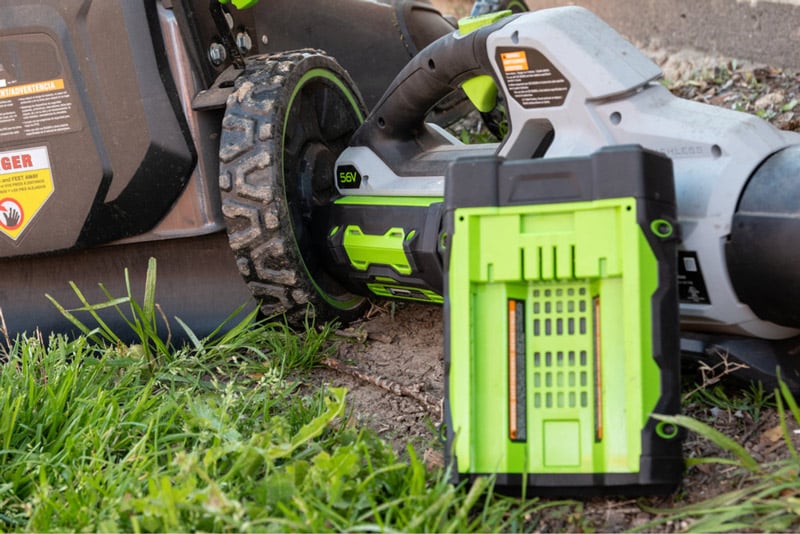
5. The Mower Runs but Vibrates Badly and the Blades Barely Spin
The bad news is, if this is what you’re experiencing, it’s probably one of three. The good news is, it’s probably only one of three things. All three apply to both a corded mower and a battery-operated mower.
Yes, that doesn’t sound encouraging but at least you’ll have a pretty good idea of what the problem is and what it’ll require to resolve.
The first thing you want to check is to make sure you don’t have any foreign objects stuck under the mower that may be jammed and the mower’s blades from rotating normally. This can be anything from a branch to a big chunk of turf jammed underneath the mower.
If there’s something jammed, remove it and test the mower again. If there isn’t anything jammed then you’re probably dealing with a damaged drive system or a damaged motor shaft. If it’s either one of these, you’re going to have to get repairs done before any mowing will be possible in the future.
6. The Blades Don’t Spin at All
If you power up your mower and the blades don’t spin at all right from the start, all manufacturer’s guides pretty much say the same thing:
STOP IMMEDIATELY!
One of the reasons is it might be, like in the previous tip, some kind of foreign object jammed near the blades, preventing them from spinning. You need to stop and secure power to safely inspect and remove the object before returning to normal operation.
The other reason is probably damage to the drive system. Only this time, instead of unusual or violent vibrations, the damage is complete and all rotational power to the blades is gone and needs to be repaired.
But again, at least you know the reason why now.
Conclusion
Having an electric mower is a good thing. It’s environmentally friendly and requires little maintenance compared to a traditional mower. However, that doesn’t mean it won’t experience similar issues that will affect its operational capability.
Understanding the type of issues you may encounter with an electric mower, though, will go a long way in maintaining your mower over the long term while minimizing issues before they can potentially lead to serious damage.


